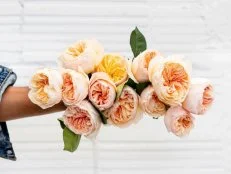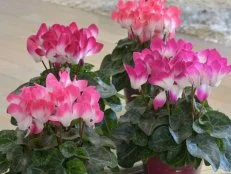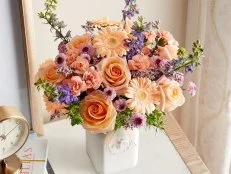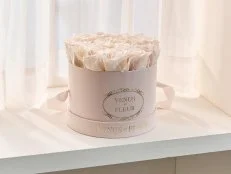How to Grow and Care for Mandevilla Plants
Fast-growing mandevilla vines bring a splash of bright, beachy color and big, tropical flowers to sunny spaces in the garden.
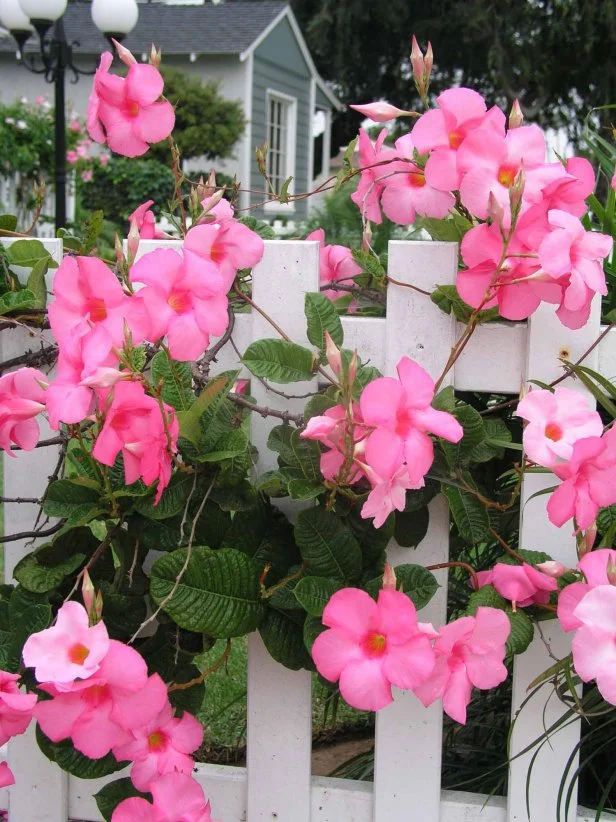
Mandevilla is an almost irresistible flowering vine, but doesn’t tolerate freezing temperatures.
What Is Mandevilla?
Mandevilla is the quintessential tropical vine. It's fast-growing, sun-loving and eager to twine up any trellis or wall and produce tons of big, bright flowers. Mandevilla is a popular choice for gardens and containers, and its showy blooms, which come in shades of red, pink, white and yellow, give a lush tropical vibe to patios, porches and decks that are far from the beach. While classic mandevillas grow as vines, newer varieties form mounds that are great for beds and borders. These undemanding beauties are ideal for beginning gardeners.
Mandevilla Basics
Botanical Name: Mandevilla spp.
Common Name: Mandevilla, rocktrumpet
Bloom Time: Late spring to frost
USDA Hardiness Zones: Perennial in 9 to 11
Mandevilla Origins
Mandevilla is native to Central and South America, Mexico, the West Indies and parts of the Southwestern U.S. It's named for the English diplomat and amateur botanist Henry Mandeville who found this pretty, blooming vine growing in forests in Argentina in the late 1830s. He named it dipladenia and sent a sample home to England, but the plant's name was changed a few decades later to honor him.
Mandevilla Benefits
In the nearly two centuries since it appeared in European and American gardens, mandevilla has become a popular plant.
- Mandevilla plant care is easy
- Mandevillas tolerate heat and drought
- They produce lots of trumpet-shaped blooms that attract pollinators
- They're deer- and rabbit-resistant.
Mandevilla FAQs
How big do mandevillas grow? Bushy or vining mandevillas range from 1 to 20 feet tall and up to 15 feet wide.
Is mandevilla toxic? They're toxic to humans and animals, and the cut stems ooze a milky sap that can irritate your skin.
Do mandevillas need sun or shade? Full sun is ideal, but they'll tolerate some shade.
Are mandevillas the same as dipladenias? They're related, and some people use the names interchangeably, but they're different. Dipladenias are shrubbier and have smooth, shiny leaves. Mandevillas aren't as bushy and their leaves are longer and thinner.
How do you take care of mandevillas in the winter? Bring mandevillas inside when the temperatures drop. The minimum temperature they can tolerate is 50 degrees Fahrenheit. Place them near a window that gets lots of sunlight and mist their leaves regularly or run a humidifier.
Can mandevillas stay in pots? They grow very well in pots, making them an excellent choice for patios, porches and decks.
Why isn't my mandevilla blooming? Good mandevilla plant care means at least 6 hours of direct sun daily; damp, rich soil and regular fertilizer.
Do mandevillas come back every year? They're perennials only in USDA Hardiness Zones 9 to 11. In most of the U.S., they're grown as annuals.
Colorful Climbers 12 Photos
Want vertical interest in your garden? All it takes is a simple trellis and a beautiful vine. Try one of these for easy-growing good looks.
How to Plant Mandevilla
Plant mandevillas outdoors in the spring. Plant after the last frost, when the temperatures stay consistently above 50 to 55 degrees F.
Mandevillas thrive in full sun. Give your mandevilla at least six hours of full sun every day. The plants can take some shade, but won't produce as many flowers and may become leggy. If you live where it's hot (hello, Phoenix and Austin), mandevilla will tolerate and even appreciate some shelter from the sun on summer afternoons. If you're growing mandevilla in a pot, move it under a patio roof or shade tree so the leaves don't get scorched.
Mandevilla needs rich soil that drains easily. Mandevilla roots can rot in heavy soil. For optimum mandevilla plant care, use a potting mix in your containers. For plants in the ground, loosen the soil and work in lots of organic material.
Water after planting and then keep the soil damp, not soggy. Mandevillas can tolerate some dryness, but they appreciate consistent moisture, so don't let the soil dry out completely between waterings.
Mandevillas look great in containers. Choose a pot that's big enough to hold your mandevilla at its mature size. Big containers are less likely to tip over in the wind. Use a container with holes for drainage, or add holes to the bottom. If you pot up a vining mandevilla, train the vines vertically, up a post, or horizontally, along a balcony. Put a shrubbier type in a hanging basket and hang it from your porch or a pole around your pool. You'll have rafts of shiny green leaves and flowers all summer long and your outdoor space will look straight out of the Caribbean.
Plant a mandevilla in the ground. Let a climbing mandevilla twine around a mailbox post, arbor, pergola, trellis or fence in your garden or yard. Make sure the support can hold its weight.
Mandevilla Plant Care Tips
Prune mandevilla vines as needed. Mandevillas grow fast. Keep your clippers handy so they don't get too big or take over everything else, unless, like Hilton Carter, you dig gardens that look like nature is in control instead of humans. The best time to prune a mandevilla is from late winter to early spring, before new growth appears. For the best mandevilla plant care, cut off diseased or damaged branches at anytime.
Mandevillas needs warm temperatures and high humidity. Mandevilla is a tropical and prefers daytime temperatures of 70 to 90 degrees F. and nighttime temperatures of 60 to 65 degrees F. Bring potted plants indoors to overwinter. If you live in a dry climate or you're growing mandevillas indoors, mist their leaves regularly or run a humidifier.
Fertilize mandevillas in the spring. Mandevillas in the ground don't usually need fertilizer, but potted plants grow better if you mix in some timed-release fertilizer when you plant. Keep the blooms coming by regularly applying a water-soluble fertilizer, too. Read your product label to know how often and how much to use. Stop feeding indoor mandevillas in the fall and winter.
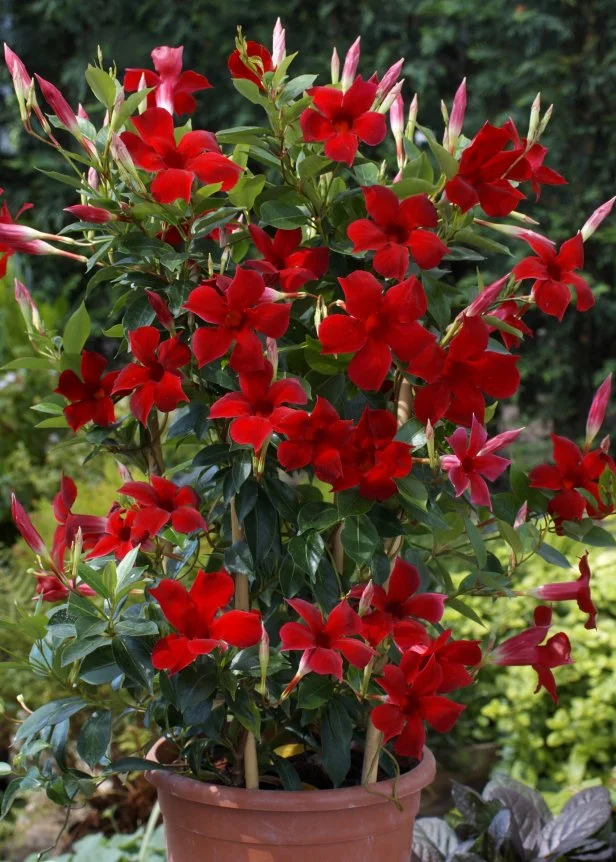
Costa Farms
Mandevilla Sun Parasol Crimson creates a tropical feel and is evergreen in frost-free regions.
What to Know about Mandevilla Pests and Diseases
Indoor mandevillas are vulnerable. Mandevilla is relatively disease- and pest-free when grown outdoors in proper conditions, but mandevillas growing indoors can be vulnerable to whiteflies, aphids, scales, spider mites and mealybugs. Even the hardiest tropical plants can struggle when they overwinter inside, away from their natural environment.
Use neem oil on pests. If your mandevilla gets infested, spray it with neem oil or an insecticidal soap until the bugs are gone. It may take a few applications, and you may want to quarantine it temporarily, so the pests don't spread to other indoor plants.
Avoid overwatering to stave off fungus. Humid, wet conditions can encourage fungal diseases like anthracnose, which causes leaf spots and stem cankers, and powdery mildew, which makes mandevilla leaves look as if they're coated with white powder. Use a fungicide labeled to treat these diseases if they occur, and water around the roots, not from above, to keep the foliage dry.
Recommended Types of Mandevilla
Initially, all mandevilla were vining plants. But horticulturists have bred newer varieties that are shorter and bushier, making them better suited to containers and hanging baskets. Older varieties tend to have bigger leaves with a rougher texture. New varieties have smaller, glossier leaves that let mandevilla flowers be the stars of the show.
There are approximately 180 species of mandevillas. Here are some of our favorites; if you're looking for a perennial, check the hardiness zone for each of these before you buy, or plan to grow your choice as an annual.
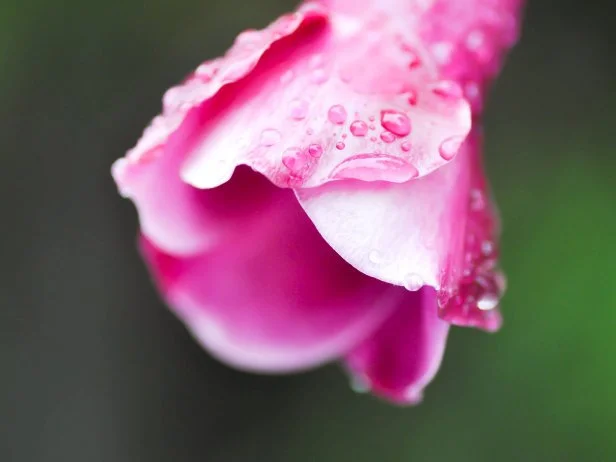
Shutterstock/Job Narinnate
'Alice DuPont' is a vigorous, woody climber with wrinkled leaves and big, icy-pink flowers.
'Alice DuPont', sometimes shown as 'Alice du Pont,' is a bushy, vining variety with big pink flowers that can grow to 12 feet. It's named for the wife of Gilded Age businessman Pierre S. du Pont who created Longwood Gardens outside of Philadelphia.

Suntory Flowers/National Garden Bureau
Sun Parasol Apricot has pale yellow petals with golden throats.
Sun Parasol is a collection of mandevilla hybrids bred by Suntory, a Japanese company. Sun Parasol Apricot, shown here, grows 6 to 8 feet tall and takes part sun to sun. Others in the collection vary in size and range in color from white to deep reds.
Pink Parfait (Mandevilla x amabilis) is a vining variety with unusual double pink blooms. It can reach 20 feet tall.
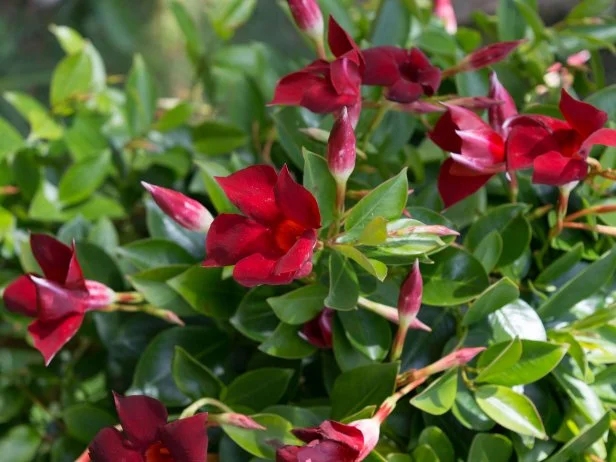
Shutterstock/Alina Kuptsova
'Red Riding Hood' is a shrubby, low-growing, evergreen mandevilla.
'Red Riding Hood' (Mandevilla sanderi) has deep pink to red flowers with yellow throats on a short shrubby plant that gets 6 to 8 feet tall. You may see it called Brazilian jasmine.
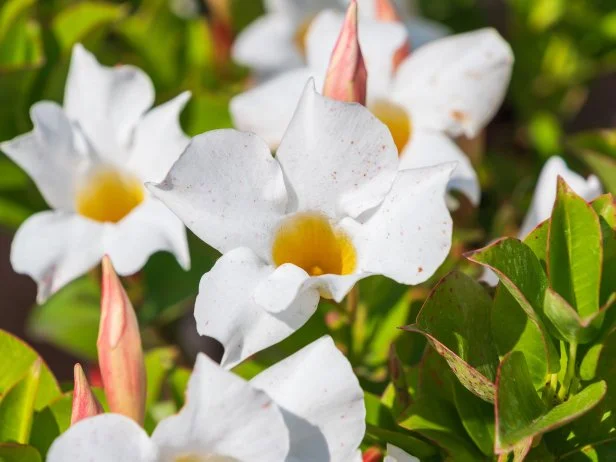
Shutterstock/bykot photo
Mandevilla laxa, or Chilean jasmine, has fragrant, creamy-white flowers and long fruit pods that resemble bean pods.
Chilean Jasmine (Mandevilla laxa) bears fragrant, creamy white flowers on a vine that reaches 12 to 15 feet.
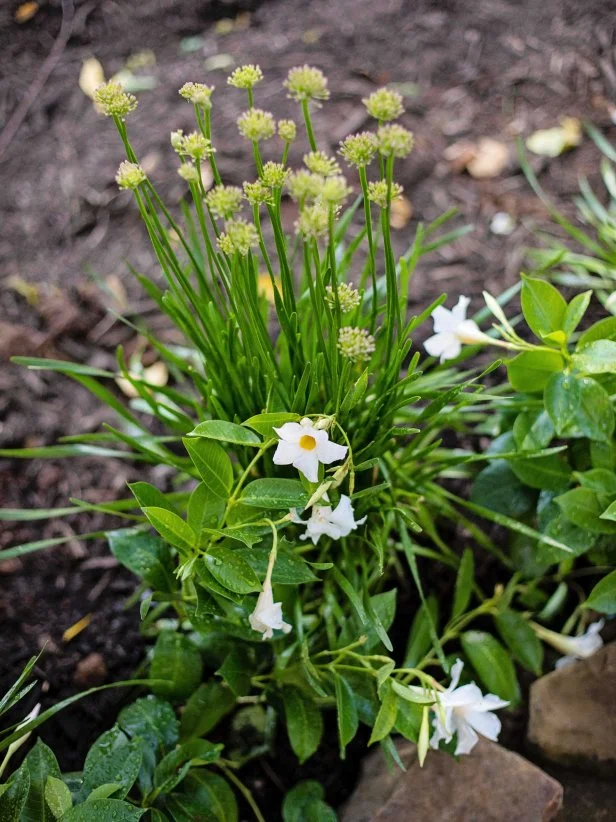
Shain Rievley
White mandevillas combine beautifully with other vining plants and long grasses.
White Mandevilla (Mandevilla boliviensis) has white blooms with golden throats and grows 10 to 12 feet tall.










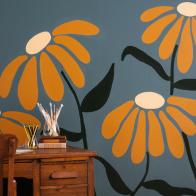





















.jpg.rend.hgtvcom.196.196.suffix/1738869041672.jpeg)












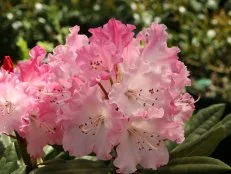






.jpg.rend.hgtvcom.231.174.85.suffix/1738869041672.webp)








